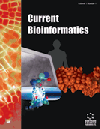-
s Predicting Drug-target Interactions via FM-DNN Learning
- Source: Current Bioinformatics, Volume 15, Issue 1, Jan 2020, p. 68 - 76
-
- 01 Jan 2020
Abstract
Background: Identifying Drug-Target Interactions (DTIs) is a major challenge for current drug discovery and drug repositioning. Compared to traditional experimental approaches, in silico methods are fast and inexpensive. With the increase in open-access experimental data, numerous computational methods have been applied to predict DTIs. Methods: In this study, we propose an end-to-end learning model of Factorization Machine and Deep Neural Network (FM-DNN), which emphasizes both low-order (first or second order) and high-order (higher than second order) feature interactions without any feature engineering other than raw features. This approach combines the power of FM and DNN learning for feature learning in a new neural network architecture. Results: The experimental DTI basic features include drug characteristics (609), target characteristics (1819), plus drug ID, target ID, total 2430. We compare 8 models such as SVM, GBDT, WIDE-DEEP etc, the FM-DNN algorithm model obtains the best results of AUC(0.8866) and AUPR(0.8281). Conclusion: Feature engineering is a job that requires expert knowledge, it is often difficult and time-consuming to achieve good results. FM-DNN can auto learn a lower-order expression by FM and a high-order expression by DNN.FM-DNN model has outstanding advantages over other commonly used models.


